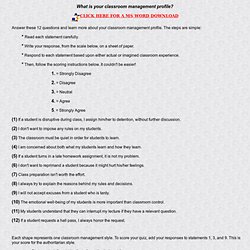

Teach the World Better: Top Thirteen Tips for Teachers (Seriously, you need to read this!) Meet 4 Teachers Who Took Classroom Design to the Next Level. Wow, what can we say!

This past summer we decided to start a learning space design challenge on ClassroomCribs.com to highlight all of the amazing “cribs” that you have designed for students. Instead of just “aesthetics” we focused this challenge on brain-friendly learning spaces that promoted deep learning and engagement through design. And we were blown away by the response! Over 4,000 educators have joined our Classroom Cribs learning community and many of you sent in videos of your learning space as part of the challenge. Together, Erin Klein, Ben Gilpin, Tom Murray, and myself watched all of the challenge entries with a focus on brain-friendly design and non-traditional learning environments.
This month we will be featuring 30 of the learning spaces during our “30 Days of Design” on the ClassroomCribs.com blog. Announcing Our Grand Finalists Each of our finalists have gone above and beyond in designing their learning spaces. Here are the finalists! 30 Techniques to Quiet a Noisy Class. One day, in front 36 riotous sophomores, I clutched my chest and dropped to my knees like Sergeant Elias at the end of Platoon.

Instantly, dead silence and open mouths replaced classroom Armageddon. Standing up like nothing had happened, I said, "Thanks for your attention -- let's talk about love poems. " I never used that stunt again. After all, should a real emergency occur, it would be better if students call 911 rather than post my motionless body on YouTube. I've thought this through. Most teachers use silencing methods, such as flicking the lights, ringing a call bell (see Teacher Tipster's charming video on the subject), raising two fingers, saying "Attention, class," or using Harry Wong's Give Me 5 -- a command for students to: Focus their eyes on the speaker Be quiet Be still Empty their hands Listen. There is also the "three fingers" version, which stands for stop, look, and listen.
Lesser known techniques are described below and categorized by grade bands: Call and Response. 5 Quick Classroom-Management Tips for Novice Teachers. I made a good number of blunders my first year teaching that still make me cringe.

I learned though. And it's fair to say, when it comes to managing a classroom, most of what we learn as new teachers is trial by fire. It's also smart to heed the advice of those who have walked -- and stumbled -- before you. If you are struggling with discipline, here are five tips that you can start using right away: #1 Use a normal, natural voice Are you teaching in your normal voice? Raising our voice to get students' attention is not the best approach, and the stress it causes and the vibe it puts in the room just isn't worth it. You want to also differentiate your tone. . #2 Speak only when students are quiet and ready This golden nugget was given to me by a 20-year veteran my first year. So I tried it; I fought the temptation to talk. My patience paid off. Tips for Creating Wow-Worthy Learning Spaces. "Look at your learning space with 21st-century eyes: Does it work for what we know about learning today, or just for what we knew about learning in the past?”

-The Third Teacher Does your classroom mirror the rectilinear seating arrangement popular in Sumerian classrooms, circa 2000 BCE? Or is your classroom seating flexible and tricked out with the IDEO designed Node Chair by Steelcase? What classroom design changes can you do on a budget that supports learning? Those questions and more are answered below. The Basics To rethink your student seating arrangement, use Kaplan's floorplanner and try out with names like lasso, the robot, and the big x.
Lynhilt: Do your classroom rules look... All Abuzz: Michigan college prank goes viral. FEA – Lesson Plans. Classroom_management. David spade uses classroom management! What is your classroom management profile. What is your classroom management profile?

Answer these 12 questions and learn more about your classroom management profile. The steps are simple: * Read each statement carefully. * Write your response, from the scale below, on a sheet of paper. * Respond to each statement based upon either actual or imagined classroom experience. * Then, follow the scoring instructions below. 1. = Strongly Disagree 2. = Disagree 3. = Neutral 4. = Agree 5. = Strongly Agree (1) If a student is disruptive during class, I assign him/her to detention, without further discussion. (2) I don't want to impose any rules on my students. (3) The classroom must be quiet in order for students to learn. (4) I am concerned about both what my students learn and how they learn. (5) If a student turns in a late homework assignment, it is not my problem. (6) I don't want to reprimand a student because it might hurt his/her feelings. (7) Class preparation isn't worth the effort.
Tricks of the Trade: Classroom Management Tips for Teachers (Video Playlist) Teacher: Guys, I know- I know-- just- just take a deep breath, you guys. Give us a few minutes, okay? Okay, Justin, can you stop, please? Okay. Ladies and gentlemen… Say What? 5 Ways to Get Students to Listen. Ah, listening, the neglected literacy skill.

I know when I was a high school English teacher this was not necessarily a primary focus; I was too busy honing the more measurable literacy skills -- reading, writing, and speaking. But when we think about career and college readiness, listening skills are just as important. This is evidenced by the listening standards found in the Common Core and also the integral role listening plays in collaboration and communication, two of the four Cs of 21st century learning. So how do we help kids become better listeners? Check out these tactics for encouraging a deeper level of listening that also include student accountability: Strategy #1: Say it Once Repeating ourselves in the classroom will produce lazy listening in our students. Of course you don't want to leave distracted students in the dust so for those few who forgot to listen, you can advise them to, "ask three, then ask me. " Strategy #2: Turn and Talk.